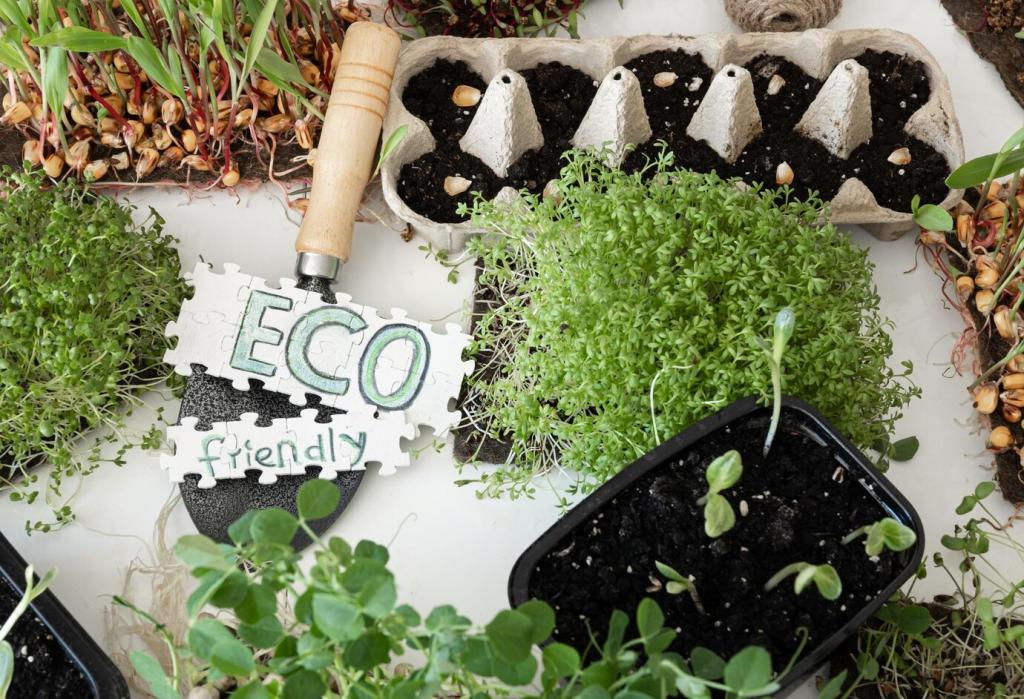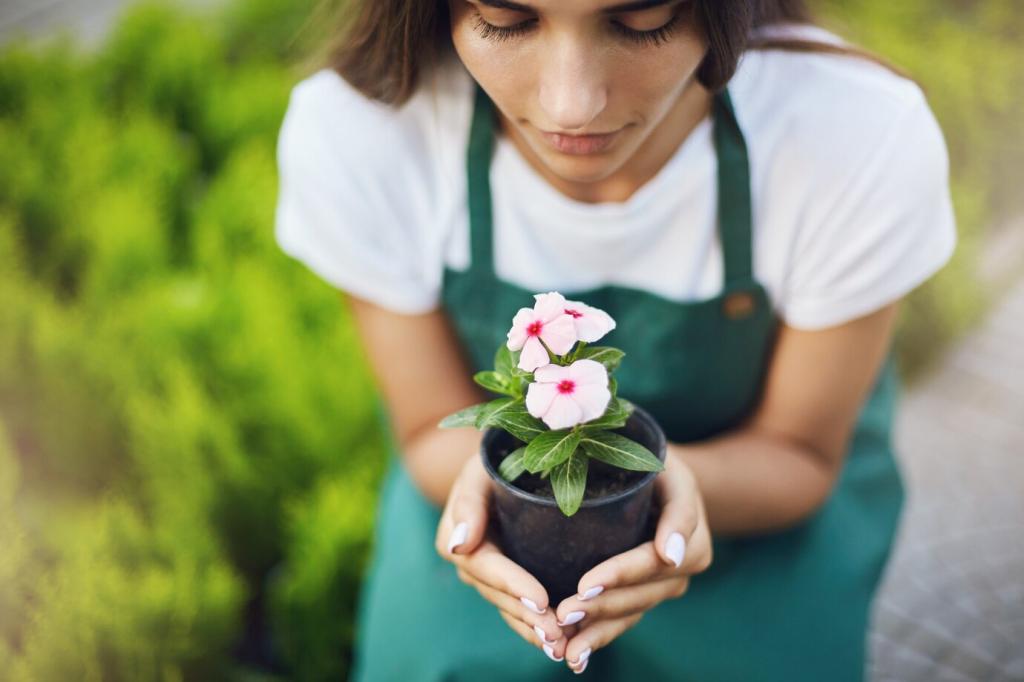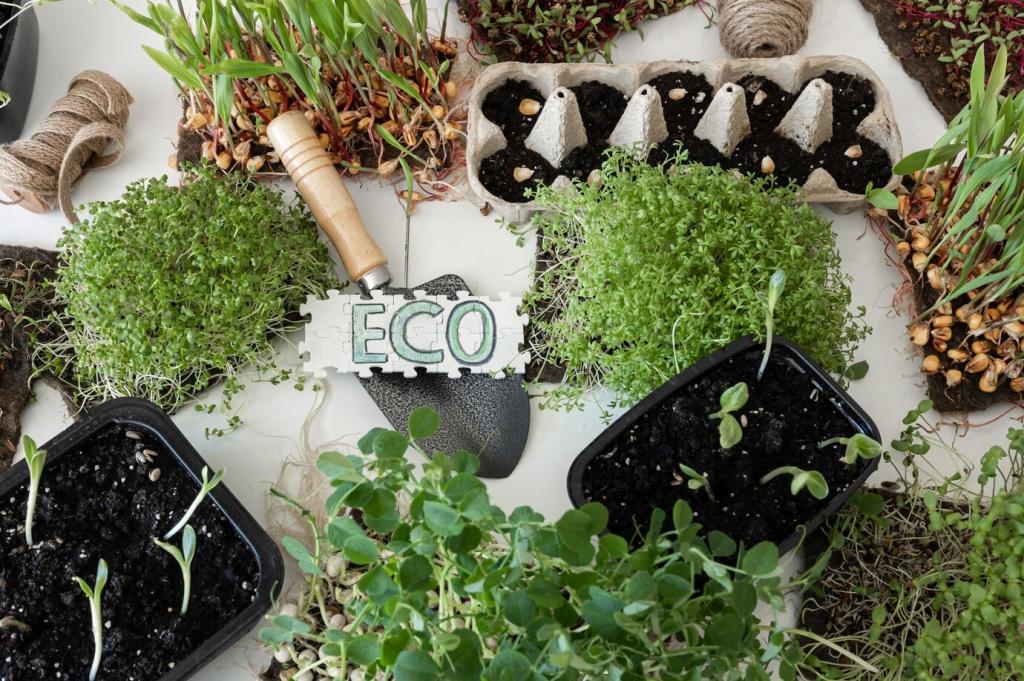
Eco-Friendly Design Principles
Eco-friendly design principles are at the heart of creating a sustainable future, guiding the choices made in architecture, product development, interiors, and urban planning. These principles emphasize minimizing environmental impact, utilizing renewable resources, and fostering well-being without compromising the needs of future generations. By integrating eco-conscious thinking into every stage of the design process, professionals can create spaces and products that are not only functional and beautiful but also responsible and resilient. This page explores the core elements and best practices of eco-friendly design, offering insights into how organizations and individuals can contribute to a more sustainable, harmonious world.

Renewable Resources
Renewable resources are materials derived from sources that can be replenished naturally within a human timescale, such as bamboo, cork, and FSC-certified wood. These materials often regenerate quickly, making their extraction less harmful compared to non-renewable alternatives. By utilizing rapidly renewable materials in their projects, designers help protect ecosystems and reduce the pressure on finite resources. Emphasizing local procurement of renewables also minimizes transportation emissions and benefits regional economies. Thus, selecting renewable resources is a critical step in fostering truly sustainable design outcomes that align with eco-friendly principles.
Recycled Content
Incorporating recycled content into design projects reduces the demand for virgin materials, conserves energy, and lessens landfill waste. Recycled glass, plastics, metals, and textiles can be seamlessly integrated into products and buildings without sacrificing quality or aesthetics. This practice not only diverts waste from the environment but also encourages the development of innovative materials and technologies. Design professionals collaborate with manufacturers to identify high-performing recycled options, elevating their appeal and viability. By specifying recycled materials, designers play a crucial role in driving market demand for sustainable products and demonstrating creative solutions for modern challenges.
Responsible Harvesting
Responsible harvesting ensures that natural resources are gathered in ways that maintain ecosystem health and community welfare. Certified programs such as FSC for wood or Fair Trade for natural fibers provide assurance that materials are obtained sustainably and ethically. This approach involves considering biodiversity, soil integrity, and the rights of local populations. Persistent demand for responsibly harvested goods inspires industries to improve their environmental practices, benefiting both nature and society. Therefore, prioritizing responsible harvesting in material selection is vital to upholding the integrity and long-term viability of eco-friendly design principles.
Previous
Next
Water Conservation Practices
Efficient Fixtures and Appliances
Selecting water-efficient fixtures and appliances—such as low-flow toilets, faucets, and high-efficiency washing machines—is a direct method to reduce indoor water consumption. Modern innovations in plumbing technology maintain user comfort and functionality while using a fraction of the water compared to older models. By specifying these products, designers help residents and businesses save thousands of gallons annually. Rebates and regulatory standards further support widespread adoption. Integrating efficient fixtures in design ensures water conservation becomes a seamless part of everyday life without compromising on experience or performance.
Rainwater Harvesting
Rainwater harvesting systems capture and store runoff from rooftops or paved surfaces for later use in irrigation, flushing toilets, or even potable supply after proper treatment. This practice alleviates pressure on local water resources while providing a supplemental supply that is often more sustainable and cost-effective. Designers can incorporate aesthetically pleasing storage solutions and distribution systems that blend with the overall architecture. Encouraging rainwater harvesting in projects not only conserves water but also educates users about resource stewardship, strengthening the community’s eco-conscious behaviors.
Native and Drought-Tolerant Landscaping
Designing landscapes with native and drought-tolerant plants drastically reduces the need for irrigation, fertilizers, and maintenance. Such plantings are adapted to local climatic conditions, supporting biodiversity and resisting pests naturally. By avoiding thirsty, non-native species, designers create outdoor spaces that are both beautiful and resilient in the face of changing weather patterns. This approach increases habitat value for wildlife and reduces chemical runoff into waterways. Incorporating native landscaping into projects showcases the harmony between design and nature, making a visible statement of environmental responsibility.

Previous slide
Next slide
Design for Disassembly
Design for disassembly is a forward-thinking approach that allows products or buildings to be easily taken apart at the end of their useful life. Components can be reused, recycled, or safely disposed of, greatly reducing landfill contributions. This strategy requires foresight in material selection, joinery, and documentation, but the long-term environmental benefits are considerable. Disassembly-friendly designs also facilitate repairs and upgrades, enabling longer product lifespans. As consumer awareness grows, design for disassembly becomes a symbol of both environmental stewardship and economic prudence.
Durable and Timeless Solutions
Emphasizing durability and timelessness combats throwaway culture and planned obsolescence, two major drivers of waste. Designs that are robust, easy to maintain, and aesthetically enduring serve users for many years, lessening the need for frequent replacement or renovation. This consideration applies to everything from furniture and products to full-scale buildings. By choosing quality over novelty, designers reduce resource consumption and environmental impact over time. Durability, paired with an adaptable, timeless look, ensures that design remains functional and appreciated for generations.
Previous
Next
Site Responsiveness and Context
Conducting a thorough climate analysis before design begins informs critical decisions about building orientation, insulation, and energy strategies. Understanding local temperature ranges, precipitation, sunlight, and wind patterns enables designers to tailor solutions that naturally enhance comfort and efficiency. For example, placing windows based on solar angles or shielding facades from prevailing winds can dramatically reduce energy costs. By aligning designs with inherent climatic strengths and challenges, professionals create spaces that are not only sustainable but also uniquely suited to their locations.
Lifecycle Assessment and Long-Term Value
Cradle-to-cradle thinking envisions every product or building as part of a continuous, regenerative lifecycle where materials are infinitely reused or safely returned to nature. This approach contrasts with the traditional “cradle-to-grave” model that ends in disposal. By designing for material recovery, nutrient cycles, and non-toxic components, cradle-to-cradle encourages innovation and full accountability. Adoption of this framework not only eliminates waste but also generates positive environmental impacts that replenish natural systems.
Social and Economic Sustainability

Prioritizing healthy and inclusive environments guarantees access and well-being for individuals of all ages, abilities, and backgrounds. Universal design principles, acoustics, daylighting, and biophilia contribute holistically to occupant satisfaction, mood, and health. Spaces that nurture physical and psychological needs enhance quality of life, productivity, and happiness. By uplifting user experience and accessibility as key goals, designers ensure that eco-friendly projects deliver meaningful value to communities.
